Shirvalkar Lab
Welcome!
The Shirvalkar Lab (Pain Neuromodulation Lab) is led by Prasad Shirvalkar MD, PhD, a neurologist and pain physician-scientist who treats the full range of chronic pain syndromes.
Among the amazing things that the brain does, it is responsible for generating and representing the most fundamental human percept: Pain. We focus on studying basic brain mechanisms of acute and chronic pain in humans using neuropsychology, behavior, imaging (DTI, fMRI), neurophysiology (invasive recordings and EEG), computational neuroscience, signal processing and machine learning. Our short term goal is to understand of how pain circuits live in the brain and how these circuits go awry to produce chronic pain states. The long term goal is to use this new knowledge to develop new technology for spine and brain stimulation to treat patients, and improve quality of life.
Our lab is physically located across three campuses: Parnassus, Mount Zion and Mission Bay. We collaborate with critical partners in anesthesiology, neurology and neurological surgery to tackle these urgent problems. We are always looking for enthusiastic and accomplished people to join us. Welcome!

Tailoring Deep Brain Stimulation to Treat Chronic Pain
By Jen A. Miller on February 03, 2020
One in four U.S. adults suffer from chronic pain, many from chronic pain that is resistant to treatment. People with conditions like post-stroke pain, phantom limb pain, nerve pain and pain from spinal injuries are often left with in agony but little hope for relief.
That could change as deep brain stimulation (DBS) goes from a way to treat motor diseases to a possible treatment for chronic pain – treatment that can be customized to the patient’s brain makeup and their own brain’s feedback.
“Never before have patients with chronic pain had the opportunity to walk around and deliver neural data in real time,” said Prasad Shirvalkar, MD, PhD, assistant professor of Anesthesiology at UC San Francisco. “We’re at the front edge of trying to open up new indications for DBS.”
DBS already is used to treat movement disorders, like Parkinson’s disease, dystonia and essential tremors. Patients have electrodes implanted deep into the parts of their brain that control movement, and receive electrical current via a stimulator put into their chest.
The problem with current DBS treatment is that the electrical current is constant. It doesn’t take in feedback or adjust based on what’s really happening in the brain. Patients can suffer side effects like trouble speaking and change in personality – even seizure or stroke. Their brains can also become acclimated to the treatment so that it doesn’t work anymore.
Shirvalkar – along with Edward Chang, MD, and Philip Starr, MD, PhD, professors of Neurological Surgery and members of the USCF Weill Institute for Neurosciences – have received a $7.56 million, five-year grant from the National Institutes of Health (NIH) to improve DBS as a treatment for chronic pain. It’s one of 10 grants worth more than $40 million that UCSF researchers have been awarded as part of the NIH Helping to End Addiction Long-Term (HEAL) Initiative.
Instead of providing a continuous current, this grant is helping researchers make the electric charge more customized by first identifying new targets for stimulation, and creating systems that can take feedback from the brain and adjust the device accordingly.
“When we find those new targets, the next goal is identifying brain biomarkers of chronic pain for each patient,” Shirvalkar said. That means recording direct from patients’ brains while they experience natural pain fluctuations. “By combining their neural signals with their pain reports, we’re trying to build a model of how their brain represents pain.”
Shirvalkar likens current DBS to what they hope for to a space heater versus a thermostat. A space heater “provides constant heat. You might get too hot and then have to turn it off,” he said. “A thermostat is feedback controlled heating. We are trying to build a model to serve as a thermostat to control electronic stimulation to provide pain relief.”
The grant started in October 2019, and Shirvalkar said they are still enrolling patients. The grant includes funding for travel, so patients do not need to live in California. Those interested in being part of the trial can contact the Pain Management Center at [email protected].
UCSF Receives 10 NIH Grants to Study Pain and Opioid Addiction
By Nina Bai on October 10, 2019
The National Institutes of Health (NIH) has awarded 10 grants this year to UC San Francisco researchers as part of the NIH Helping to End Addiction Long-term (HEAL) Initiative.
The awards to UCSF total more than $40 million and will fund projects ranging from better technologies for MRI imaging of back pain, to the use of deep-brain stimulation for treating chronic pain, to a new interdisciplinary research center for low back pain.
In 2016, an estimated 50 million U.S. adults suffered from chronic pain – generally defined as pain that lasts more than three months – and low back pain, headaches, arthritis, neuropathy and other forms cost about $635 billion annually. In 2018, an estimated 10.3 million Americans age 12 and older misused opioids, including heroin.
Several of the grants to UCSF focus on low back pain, a common yet hard-to-treat condition. According to the Global Burden of Disease 2010 Study, low back pain ranked highest in terms of years lived with disability, yet no consistently effective and durable pharmacologic intervention exists for chronic low back pain, though opioids are a common treatment.
The largest of the new grants, $29.4 million, will go to creating the Core Center for Patient-centric Mechanistic Phenotyping in Chronic Low Back Pain (REACH) at UCSF, an interdisciplinary consortium of basic and clinical scientists working to define different types of chronic low back pain and pain mechanisms that may lead to effective, personalized treatments for patients. REACH will be led by Jeffrey C. Lotz, PhD, professor and vice chair of research in Orthopaedic Surgery.
Other UCSF projects that received HEAL funding:
- Aaron Fields, PhD, associate professor of Orthopaedic Surgery, and Roland Krug, PhD, associate professor of Radiology and Biomedical Imaging, are leading a $3.6 million award ($1.1 million for phase I) for their team to develop new MRI methods for measuring endplate pathologies (endplates separate discs and vertebrae in the spine) to better select patients for non-addictive and minimally invasive treatments.
- Sharmila Majumdar, PhD, the Margaret Hart Surbeck Distinguished Professor of Advanced Imaging, received $4.39 million ($513,742 for phase I) for her team to improve imaging of low back pain, including developing deep-learning-based technologies for faster image reconstruction, tissue segmentation and spinal degeneration detection.
- Prasad Shirvalkar, MD, PhD, assistant professor of Anesthesiology, received $7.56 million to improve deep brain stimulation for chronic pain, which has shown early promise. Shirvalkar’s team aims to develop long-term implants for intracranial stimulation from multiple brain sites that automatically adjust to personalized brain signals of pain. He is collaborating with Edward Chang, MD, and Philip Starr, MD, professors of Neurological Surgery and members of the UCSF Weill Institute for Neurosciences, on this project.
- Michael McManus, PhD, professor in the UCSF Diabetes Center, and Lily Jan, PhD, professor of Physiology, were awarded $500,000 to better understand the function of ion channels, which are critical to the nervous system. They aim to generate data and reagents for poorly characterized ion channels, to illuminate the underlying interacting genetic components, and ultimately to identify ion channel phenotypes relevant to human disease.
- James Sorensen, PhD, professor of Psychiatry, was awarded five grants totaling $2.62 million to study the efficacy of early interventions to prevent the progression from risky opioid use to opioid use disorder. His team will test a subthreshold opioid use disorder prevention (STOP) intervention program in the primary care setting, which consists of a practice-embedded nurse care manager who provides patient education and monitoring, advice delivered by the primary care physician, and phone counseling.
The NIH launched the HEAL Initiative in April 2018 to speed scientific solutions to stem the national opioid public health crisis. It aims to prevent addiction through enhanced pain management and to improve treatment for opioid misuse disorder and addiction. This year, the HEAL Initiative has awarded $945 million to approximately 375 projects nationwide.
“It’s clear that a multi-pronged scientific approach is needed to reduce the risks of opioids, accelerate development of effective non-opioid therapies for pain and provide more flexible and effective options for treating addition to opioids,” NIH Director Francis S. Collins, MD, PhD, said in a press release about the awards. “This unprecedented investment in the NIH Heal Initiative demonstrates the commitment to reversing this devastating crisis.”
Principal Investigator
 Prasad Shirvalkar MD, PhD
Prasad Shirvalkar MD, PhD
Assistant Professor Department of Anesthesiology (Pain Management)
Research Team
 Kristin Sellers PhD
Kristin Sellers PhD
Associate Professional Researcher in the Chang Lab
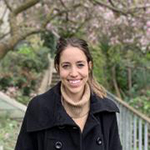 Ashlyn Schmitgen
Ashlyn Schmitgen
Clinical Research Coordinator
 Jordan Prosky
Jordan Prosky
Clinical Research Coordinator
 Bella Joseph
Bella Joseph
Clinical Research Coordinator
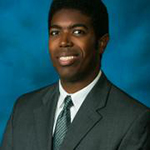 Chad Sitgraves
Chad Sitgraves
Clinical Research Coordinator
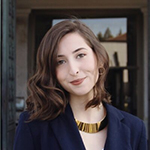 Ana Shaughnessy
Ana Shaughnessy
Clinical Research Coordinator
Collaborators
 Edward Chang MD
Edward Chang MD
UCSF Neurosurgeon
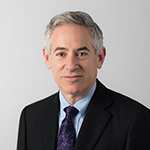 Philip Starr MD, PhD
Philip Starr MD, PhD
UCSF Neurosurgeon
 Lawrence Poree MD, PhD, MPH
Lawrence Poree MD, PhD, MPH
Professor, Anesthesia. Pain Medicine Specialist
 Doris Wang MD, PhD
Doris Wang MD, PhD
UCSF Neurosurgeon
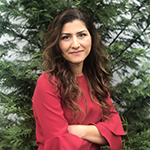 Maryam Shanechi PhD
Maryam Shanechi PhD
Associate Professor and Viterbi Early Career Chair in Electrical and Computer Engineering at USC
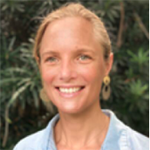 Coralie de Hemptinne MS, PhD
Coralie de Hemptinne MS, PhD
Assistant Professor in the Normal Fixel Institute for Neurological Diseases at University of Florida
Proceedings of the Ninth Annual Deep Brain Stimulation Think Tank: Advances in Cutting Edge Technologies, Artificial Intelligence, Neuromodulation, Neuroethics, Pain, Interventional Psychiatry, Epilepsy, and Traumatic Brain Injury.
Frontiers in human neuroscience
Wong JK, Deuschl G, Wolke R, Bergman H, Muthuraman M, Groppa S, Sheth SA, Bronte-Stewart HM, Wilkins KB, Petrucci MN, Lambert E, Kehnemouyi Y, Starr PA, Little S, Anso J, Gilron R, Poree L, Kalamangalam GP, Worrell GA, Miller KJ, Schiff ND, Butson CR, Henderson JM, Judy JW, Ramirez-Zamora A, Foote KD, Silburn PA, Li L, Oyama G, Kamo H, Sekimoto S, Hattori N, Giordano JJ, DiEuliis D, Shook JR, Doughtery DD, Widge AS, Mayberg HS, Cha J, Choi K, Heisig S, Obatusin M, Opri E, Kaufman SB, Shirvalkar P, Rozell CJ, Alagapan S, Raike RS, Bokil H, Green D, Okun MS
Practical Closed-Loop Strategies for Deep Brain Stimulation: Lessons From Chronic Pain.
Frontiers in human neuroscience
Prosky J, Cagle J, Sellers KK, Gilron R, de Hemptinne C, Schmitgen A, Starr PA, Chang EF, Shirvalkar P
Epidural Spinal Electrogram Provides Direct Spinal Recordings in Awake Human Participants.
Frontiers in human neuroscience
Burke JF, Kunwar N, Yaroshinsky MS, Louie KH, Shirvalkar P, Su P, Henry M, Pasvankas G, Poree L, Jacques L, Wang DD
Corrigendum: Proceedings of the Eighth Annual Deep Brain Stimulation Think Tank: Advances in Optogenetics, Ethical Issues Affecting DBS Research, Neuromodulatory Approaches for Depression, Adaptive Neurostimulation, and Emerging DBS Technologies.
Frontiers in human neuroscience
Vedam-Mai V, Deisseroth K, Giordano J, Lazaro-Munoz G, Chiong W, Suthana N, Langevin JP, Gill J, Goodman W, Provenza NR, Halpern CH, Shivacharan RS, Cunningham TN, Sheth SA, Pouratian N, Scangos KW, Mayberg HS, Horn A, Johnson KA, Butson CR, Gilron R, de Hemptinne C, Wilt R, Yaroshinsky M, Little S, Starr P, Worrell G, Shirvalkar P, Chang E, Volkmann J, Muthuraman M, Groppa S, Kühn AA, Li L, Johnson M, Otto KJ, Raike R, Goetz S, Wu C, Silburn P, Cheeran B, Pathak YJ, Malekmohammadi M, Gunduz A, Wong JK, Cernera S, Hu W, Wagle Shukla A, Ramirez-Zamora A, Deeb W, Patterson A, Foote KD, Okun MS
High-Frequency Impulse Therapy for Treatment of Chronic Back Pain: A Multicenter Randomized Controlled Pilot Study.
Journal of pain research
Amirdelfan K, Hong M, Tay B, Reddy S, Reddy V, Yang M, Khanna K, Shirvalkar P, Abrecht C, Gulati A
Analysis-rcs-data: Open-Source Toolbox for the Ingestion, Time-Alignment, and Visualization of Sense and Stimulation Data From the Medtronic Summit RC+S System.
Frontiers in human neuroscience
Kristin K. Sellers, Ro’ee Gilron, Juan Anso, Kenneth H. Louie, Prasad R. Shirvalkar, Edward F. Chang, Simon J. Little, Philip A. Starr
Emerging Therapies for the Treatment of Complex Regional Pain Syndrome.
Po-Yi Paul Su, Shikha Sharma, Prasad Shirvalkar, Lawrence Poree
Musical Hallucinations in Chronic Pain: The Anterior Cingulate Cortex Regulates Internally Generated Percepts.
Frontiers in neurology
Schmitgen A, Saal J, Sankaran N, Desai M, Joseph I, Starr P, Chang EF, Shirvalkar P
Proceedings of the Eighth Annual Deep Brain Stimulation Think Tank: Advances in Optogenetics, Ethical Issues Affecting DBS Research, Neuromodulatory Approaches for Depression, Adaptive Neurostimulation, and Emerging DBS Technologies.
Frontiers in human neuroscience
Vedam-Mai V, Deisseroth K, Giordano J, Lazaro-Munoz G, Chiong W, Suthana N, Langevin JP, Gill J, Goodman W, Provenza NR, Halpern CH, Shivacharan RS, Cunningham TN, Sheth SA, Pouratian N, Scangos KW, Mayberg HS, Horn A, Johnson KA, Butson CR, Gilron R, de Hemptinne C, Wilt R, Yaroshinsky M, Little S, Starr P, Worrell G, Shirvalkar P, Chang E, Volkmann J, Muthuraman M, Groppa S, Kühn AA, Li L, Johnson M, Otto KJ, Raike R, Goetz S, Wu C, Silburn P, Cheeran B, Pathak YJ, Malekmohammadi M, Gunduz A, Wong JK, Cernera S, Wagle Shukla A, Ramirez-Zamora A, Deeb W, Patterson A, Foote KD, Okun MS
The American Society of Pain and Neuroscience (ASPN) Practical Guidelines to Study Design and Scientific Manuscript Preparation in Neuromodulation.
Journal of pain research
A Tale of Two Cords: Diastematomyelia.
Pain Medicine
Westin Tom, Thoha Pham, Prasad Shirvalkar
A Deep Brain Stimulation Trial Period for Treating Chronic Pain.
Journal of clinical medicine
Shirvalkar P, Sellers KK, Schmitgen A, Prosky J, Joseph I, Starr PA, Chang EF
A Comprehensive Practice Guideline for Magnetic Resonance Imaging Compatibility in Implanted Neuromodulation Devices.
Neuromodulation : journal of the International Neuromodulation Society
Sayed D, Chakravarthy K, Amirdelfan K, Kalia H, Meacham K, Shirvalkar P, Falowski S, Petersen E, Hagedorn JM, Pope J, Leever J, Deer T
Transcranial Magnetic Stimulation for Pain, Headache, and Comorbid Depression: INS-NANS Expert Consensus Panel Review and Recommendation.
Neuromodulation : journal of the International Neuromodulation Society
Leung A, Shirvalkar P, Chen R, Kuluva J, Vaninetti M, Bermudes R, Poree L, Wassermann EM, Kopell B, Levy R
Large expert-curated database for benchmarking document similarity detection in biomedical literature search.
Database
eter Brown, Aik-Choon Tan, Mohamed A El-Esawi, Thomas Liehr, Oliver Blanck, Douglas P Gladue, Gabriel M F Almeida, Tomislav Cernava, Carlos O Sorzano, Andy W K Yeung, Michael S Engel, Arun Richard Chandrasekaran, Thilo Muth, Martin S Staege, Swapna V Daulatabad, Darius Widera, Junpeng Zhang, Adrian Meule, Ken Honjo, Olivier Pourret, Cong-Cong Yin, Zhongheng Zhang, Marco Cascella, Willy A Flegel, Carl S Goodyear, Mark J van Raaij, Zuzanna Bukowy-Bieryllo, Luca G Campana, Nicholas A Kurniawan, David Lalaouna, Felix J Hüttner, Brooke A Ammerman, Felix Ehret, Paul A Cobine, Ene-Choo Tan, Hyemin Han, Wenfeng Xia, Christopher McCrum, Ruud P M Dings, Francesco Marinello, Henrik Nilsson, Brett Nixon, Konstantinos Voskarides, Long Yang, Vincent D Costa, Johan Bengtsson-Palme, William Bradshaw, Dominik G Grimm, Nitin Kumar, Elvis Martis, Daniel Prieto, Sandeep C Sabnis, Said E D R Amer, Alan W C Liew, Paul Perco, Farid Rahimi, Giuseppe Riva, Chongxing Zhang, Hari P Devkota, Koichi Ogami, Zarrin Basharat, Walter Fierz, Robert Siebers, Kok-Hian Tan, Karen A Boehme, Peter Brenneisen, James A L Brown, Brian P Dalrymple, David J Harvey, Grace Ng, Sebastiaan Werten, Mark Bleackley, Zhanwu Dai, Raman Dhariwal, Yael Gelfer, Marcus D Hartmann, Pawel Miotla, Radu Tamaian, Pragashnie Govender, Oliver J Gurney-Champion, Joonas H Kauppila, Xiaolei Zhang, Natalia Echeverría, Santhilal Subhash, Hannes Sallmon, Marco Tofani, Taeok Bae, Oliver Bosch, Páraic O Cuív, Antoine Danchin, Barthelemy Diouf, Tuomas Eerola, Evangelos Evangelou, Fabian V Filipp, Hannes Klump, Lukasz Kurgan, Simon S Smith, Olivier Terrier, Neil Tuttle, David B Ascher, Sarath C Janga, Leon N Schulte, Daniel Becker, Christopher Browngardt, Stephen J Bush, Guillaume Gaullier, Kazuki Ide, Clement Meseko, Gijsbert D A Werner, Jan Zaucha, Abd A Al-Farha, Noah F Greenwald, Segun I Popoola, Shaifur Rahman, Jialin Xu, Sunny Y Yang, Noboru Hiroi, Ozgul M Alper, Chris I Baker, Michael Bitzer, George Chacko, Birgit Debrabant, Ray Dixon, Evelyne Forano, Matthew Gilliham, Sarah Kelly, Karl-Heinz Klempnauer, Brett A Lidbury, Michael Z Lin, Iseult Lynch, Wujun Ma, Edward W Maibach, Diane E Mather, Kutty S Nandakumar, Robert S Ohgami, Piero Parchi, Patrizio Tressoldi, Yu Xue, Charles Armitage, Pierre Barraud, Stella Chatzitheochari, Luis P Coelho, Jiajie Diao, Andrew C Doxey, Angélique Gobet, Pingzhao Hu, Stefan Kaiser, Kate M Mitchell, Mohamed F Salama, Ivan G Shabalin, Haijun Song, Dejan Stevanovic, Ali Yadollahpour, Erliang Zeng, Katharina Zinke, C G Alimba, Tariku J Beyene, Zehong Cao, Sherwin S Chan, Michael Gatchell, Andreas Kleppe, Marcin Piotrowski, Gonzalo Torga, Adugna A Woldesemayat, Mehmet I Cosacak, Scott Haston, Stephanie A Ross, Richard Williams, Alvin Wong, Matthew K Abramowitz, Andem Effiong, Senhong Lee, Muhammad Bilal Abid, Cyrus Agarabi, Cedric Alaux, Dirk R Albrecht, Gerald J Atkins, Charles R Beck, A M J J Bonvin, Emer Bourke, Thomas Brand, Ralf J Braun, James A Bull, Pedro Cardoso, Dee Carter, Robin M Delahay, Bernard Ducommun, Pascal H G Duijf, Trevor Epp, Eeva-Liisa Eskelinen, Mazyar Fallah, Debora B Farber, Jose Fernandez-Triana, Frank Feyerabend, Tullio Florio, Michael Friebe, Saori Furuta, Mads Gabrielsen, Jens Gruber, Malgorzata Grybos, Qian Han, Michael Heinrich, Heikki Helanterä, Michael Huber, Albert Jeltsch, Fan Jiang, Claire Josse, Giuseppe Jurman, Haruyuki Kamiya, Kim de Keersmaecker, Erik Kristiansson, Frank-Erik de Leeuw, Jiuyong Li, Shide Liang, Jose A Lopez-Escamez, Francisco J Lopez-Ruiz, Kevin J Marchbank, Rolf Marschalek, Carmen S Martín, Adriana E Miele, Xavier Montagutelli, Esteban Morcillo, Rosario Nicoletti, Monika Niehof, Ronan O’Toole, Toshihiko Ohtomo, Henrik Oster, Jose-Alberto Palma, Russell Paterson, Mark Peifer, Maribel Portilla, M C Portillo, Antonia L Pritchard, Stefan Pusch, Gajendra P S Raghava, Nicola J Roberts, Kehinde Ross, Birgitt Schuele, ...
Closed-Loop Deep Brain Stimulation for Refractory Chronic Pain.
Frontiers in computational neuroscience
Shirvalkar P, Veuthey TL, Dawes HE, Chang EF
Chapter 47 The Development of Algorithms for Pain Care Including Neuromodulation Therapies Introducing the SAFE Principles.
Neuromodulation
Prasad Shirvalkar, Lawrence R. Poree, Elliot S. Krames
List of Contributors of Volume 2.
Neuromodulation
Al-Kaisy Adnan, Andreas Alexopoulos, Kenneth M. Alo, Ron L. Alterman, Arun Amar, Pablo Andrade, Sailesh Arulkumar, Ahmed J. Awad, Gordon Baltuch, Giancarlo Barolat, Ernest J. Barthélemy, Neil U. Barua, Maria E. Bennett, Nicole Bentley, Yarema B. Bezchlibnyk, Kelly R. Bijanki, William Bingaman, Joseph W. Boggs, Paul Boon, Brigitte A. Brouwer, Lucas W. Campos, Anthony Caparso, Annamaria Capozzo, John Chae, Jin Woo Chang, Jennifer Cheng, David Copenhaver, Timothy R. Deer, Milind Deogaonkar, Deepali Dhar, Keeley Dohmeier, Darin D. Dougherty, Dominique M. Durand, Kelly Foote, Jeffrey Gilligan, Steven S. Gill, Jorge Gonzalez-Martinez, Benjamin D. Greenberg, Robert E. Gross, Michael H. Pourfar, Clement Hamani, Salim M. Hayek, Paul E. Holtzheimer, Brian M. Ilfeld, Haiyan Jin, Bert Joosten, Na Young Jung, Chong H. Kim, Young Goo Kim, Martin Klehr, Paul Koch, Sina Kohl, Brian H. Kopell, Daniel Kramer, Elliot S. Krames, Balu Krishnan, Vibhor Krishna, Jens Kuhn, Jason Kyung-soo Hong, Kapural Leonardo, Michael S. Leong, Dianyou Li, Andreas A. Linninger, Nir Lipsman, Charles Liu, Andres M. Lozano, Michael Mackow, Mark N. Malinowski, Helen S. Mayberg, Paolo Mazzone, Ankit I. Mehta, Vivek Mehta, Reversa Mills-Joseph, Dileep Nair, Richard B. North, Michael Okun, Nikunj K. Patel, Parag G. Patil, Jason E. Pope, Lawrence R. Poree, Joshua P. Prager, Robrecht Raedt, Jonathan J. Rasouli, Serge Rasskazoff, Richard Rauck, Kevin Reeves, Ali R. Rezai, Jonathan Russin, Abraham Sabersky, Michael Saulino, Eugenio Scarnati, Stefan Schu, Mayur Sharma, Jane Shipley, Prasad Shirvalkar, Konstantin V. Slavin, Michael Stanton-Hicks, Scellig Stone, William A. Stuart, Bomin Sun, Kevin Tangen, Stewart J. Tepper, Maarten van Kleef, Tim Vancamp, Paul Verrills, Fabio Viselli, Veerle Visser-Vandewalle, Flora Vitale, Kristl Vonck, Tao Wang, Xuelian Wang, Richard L. Weiner, Alik S. Widge, Amorn Wongsarnpigoon, Alon Y. Mogilner, Kurt A. Yaeger, Tony L. Yaksh, Dali Yin, Kristina Zeljic, Chencheng Zhang, Shikun Zhan
Improving lower limb strength in incomplete spinal cord injury with non-invasive spinal associative stimulation.
Brain Stimulation
M. Cortes, G. Thickbroom, J. Valls-Sole, P. Shirvalkar, A. Pascual-Leone, D. Edwards
American neuroborreliosis presenting as cranial polyneuritis and radiculoneuritis.
Neurology(R) neuroimmunology & neuroinflammation
Wang E, Shirvalkar PR, Maciel CB, Merkler AE, Safdieh J, Gupta A
Memory-guided learning: CA1 and CA3 neuronal ensembles differentially encode the commonalities and differences between situations.
The Journal of neuroscience : the official journal of the Society for Neuroscience
Bahar AS, Shirvalkar PR, Shapiro ML
Memory modulates journey-dependent coding in the rat hippocampus.
The Journal of neuroscience : the official journal of the Society for Neuroscience
Ferbinteanu J, Shirvalkar P, Shapiro ML
Design and construction of a cost effective headstage for simultaneous neural stimulation and recording in the water maze.
Journal of visualized experiments : JoVE
Shirvalkar PR, Shapiro ML
Infrageniculate Interventions in Female Patients: Improved Patency Rates but Higher Rates of Postoperative Complications.
Journal of Vascular Surgery
Tejas R. Shah, Angeliki Vouyouka, Daniel K. Han, Sharif Ellozy, Robert Lookstein, Prasad Shirvalkar, Michael Marin, Peter L. Faries
Bidirectional changes to hippocampal theta-gamma comodulation predict memory for recent spatial episodes.
Proceedings of the National Academy of Sciences of the United States of America
Shirvalkar PR, Rapp PR, Shapiro ML
The multiple origins and laminar topography of the hippocampal theta rhythm.
The Journal of neuroscience : the official journal of the Society for Neuroscience
Shirvalkar P, Bahar AS
Hippocampal neural assemblies and conscious remembering.
Journal of neurophysiology
Shirvalkar PR
Cognitive enhancement with central thalamic electrical stimulation.
Proceedings of the National Academy of Sciences of the United States of America
Shirvalkar P, Seth M, Schiff ND, Herrera DG
Regulation of neurogenesis in the aging vertebrate brain: role of oxidative stress and neuropsychiatric factors.
Clinical Neuroscience Research
Evelyn Kim, Prasad Shirvalkar, Daniel G. Herrera